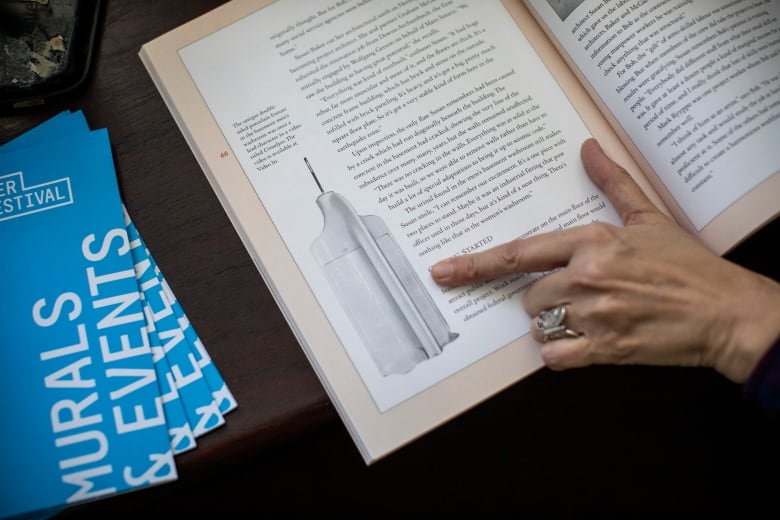This Vancouver urinal has zero privacy and 100 years of history
For more than a century, unsuspecting men have been blindsided by its design

In the summer of 2013, Matt Straw attended a wedding at Heritage Hall, a brownstone building in East Vancouver known for its elegant ballroom, stained glass chandeliers and historic clock tower.
But all anybody could talk about was that urinal.
A double-sided, or twin, urinal, to be precise, separated by what can barely be described as a divider.
The unsuspecting men who are blindsided by its design must stand upright, a hair's distance from each other, and count down the seconds while nature takes its course.
"You're out there next to somebody who you've never met before and have to basically look them in the eyes," said Straw, a 36-year-old lawyer.
"In my long and storied bathroom career, I have never seen anything like that before."
For decades, the twin urinal has befuddled thousands of men who have streamed through Heritage Hall's basement bathroom. And that notoriety has spilled outside of the restroom's marble walls, turning the urinal into a bona fide historical attraction.
"It's the abominable snowman of toilets," said Graeme Menzies, who featured the urinal in his 2019 book 111 Places in Vancouver That You Must Not Miss.
The urinal has lurked in the basement bathroom since 1916, when the building originally opened as a post office.

You can thank John Shanks for its cozy construction. The Scottish plumber patented more than a hundred urinal designs in the 19th century, when safe sewage disposal was essential amid cholera and typhus outbreaks, Menzies said.
One of Shanks' "twin twinklers," as Menzies calls it, ended up in Heritage Hall. In a biography of the building, an architect speculated the urinal may have been an industrial fitting during the building's early post office days.
It's the abominable snowman of toilets.- Graeme Menzies, co-author of
But it's not clear why Shanks shunned privacy in this particular design, Menzies said. In fact, the Scotsman only made it worse by angling both sides of the urinal toward each other.
"It's kind of startling to look at," Menzies said. "You wonder if it's Photoshopped or if it's a joke. And then no, it gets real."
The urinal stubbornly survived as the building switched hands over the decades, housing the federal agriculture department from 1965 to 1976, and later the RCMP (proving useful for the male-dominated force, Menzies noted).
The building was then abandoned and fell into disrepair, before undergoing a massive restoration in the early 1980s. In the building's biography, project architect Susan Baker recalled her delight at discovering the twin urinal.
"There's nothing like that in the women's washroom," she mused.

Today, the building houses non-profit offices and is mainly used as an event space. The urinal remains one of its few original features.
Jan Tollefsen, the building manager for Heritage Hall, said she's barely had to maintain it in her three years working at the site.
"It was made to last," she said.
While the urinal flushes on its own every 20 minutes, there is, ahem, a smell of pee that lingers. Not even a urinal deodorizer can thwart it, Tollefsen said. Still, nothing stops visitors from revelling in the contraption.
"I've even had people do photo shoots down around it," Tollefsen said.
But gentlemen, if you're thinking of checking out this one-of-a-kind john, don't unzip just yet.
It's only open for private events, meaning you'll either have to host a wedding — or be invited to one — to take part in what has become a strange Vancouver tradition.
"Everyone's fascinated by it because it's so bizarre," Tollefsen said.


